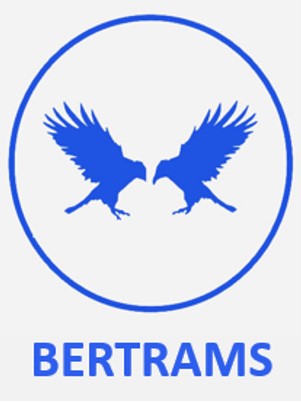Pricing data catalog:
Our approach is a structured yet flexible pricing framework that serves both freelancers and clients while unlocking company potential through transparent, value-based pricing strategies.
Human-Centric Coordination
Qualification & Experience
- Recognizes individual growth paths
- Values personal development
- Respects accumulated wisdom
Project Duration & Timing
- Acknowledges human rhythms
- Allows for natural work cycles
- Respects work-life balance
Philosophical Foundation
Coordination & Growth Factors
- Treats complexity as a natural state to be coordinated, not controlled
- Recognizes the human element in project management
- Creates space for both structure and flexibility
- Values both measurable outcomes and intangible growth
Core Pricing Components:
1.Qualification & Experience Based Pricing
- Must reflect different expertise levels
- Considers accumulated knowledge and certifications
- Links directly to value delivery
2. Project Duration Impact
- Influences pricing structure
- Affects resource allocation
- Determines long-term vs short-term rates
3. Technical Complexity & Urgency
- Premium pricing for urgent deliveries
- Additional costs for complex technical requirements
- Consideration of specialized skills
4. Seniority & Scope Alignment
- Clear differentiation between leadership and support roles
- Scope-based pricing tiers
- Recognition of responsibility levels
5. Branding Influence
- Market positioning impact
- Value perception considerations
- Reputation-based pricing elements
6. Intermediary Value
- Coordination costs
- Quality assurance premiums
- Risk management factors
This framework ensures:
- Sustainable growth
- Quality maintenance
- Client satisfaction
- Freelancer capacity
Wir nutzen dazu unseren “Human-Centric Coordination”-Ansatz zur Erweiterung unserer erstens, individuellen Analyse von “Qualification & Experience” of the workforce personnel at our customers und einer Analyse zu “Recognition of individual growth paths” of our customers individuals participating in the specific proejcts, which “Values personal development” of our customer related personnel, which “Respects accumulated wisdom” of these individuals at our customers and which considers our approach of secondly “Project Duration & Timing” to a) “Acknowledge human rhythms” for “Allowing natural work cycles”, in “
Respecting work-life balance” within our “Philosophical Foundation” of understanding and evaluation of workforce and freelancers “Coordination Attitutes & their individual Growth Factors” in each of our projects with customers workforce and our freelancer workforce. This “Treats complexity as a natural state to be coordinated, not controlled” and “Recognizes the human element in project management”. This “Creates space for both structure and flexibility” which “Values both measurable outcomes and intangible growth” for our client workforce and our freelancer workforce and ourselves as Bertrams.
The approach described successfully transformed regional teams from competitors vying for resources into collaborative partners co-owning supply chain outcomes by implementing a combination of strategic, technological, and cultural initiatives. Here’s an overview of the key elements that drove this transformation:
Key Strategies and Implementation
- Centralized and Decentralized Collaboration
- A hybrid model was adopted, balancing centralized oversight with regional autonomy. This allowed regions to maintain flexibility while aligning with overarching corporate objectives.
- Integrated Technology Platforms
- Tools like Kinaxis RapidResponse were deployed to unify demand signals across regional offices and head quarter with three different distribution centers in supply functionalyt. This provided real-time data on inventory levels, production schedules, and freight costs.
- Machines for automated demand forecasting and implemnetd Monte Carlo simulations for risk assessment, enhanced predictive analytics.
- Collaborative Tools
- Custom “Fluent Boards” (WordPress plugins) were introduced to facilitate real-time collaboration, virtual workshops hosted by freelancrs, and track shared KPIs like forecast accuracy and order fill rates.
- Scenario-planning tools enabled dynamic product allocation using optimization algorithms to balance costs, penalties, and regional demands.
- Training and Empowerment
- Customer service teams were trained as regional demand planners, equipping them with skills in demand-sensing analytics to make data-driven decisions.
- Freelancers were integrated into the process through gamified training programs, achieving high compliance with new workflows.
- Cross-Regional Engagement
- Biweekly virtual “war rooms” were established to resolve conflicts and optimize product allocation collaboratively. These sessions used scenario-planning tools to align priorities effectively.
- Shared KPIs and Accountability
- Performance metrics were aligned across regions to ensure all teams worked towards common goals. This fostered a sense of shared ownership over supply chain outcomes.
Outcomes Achieved
- Improved Forecasting Accuracy: Demand forecasting accuracy increased by 20%, enabling better decision-making.
- Cost Reductions: Total supply chain costs were reduced by 15% through optimized inventory management and logistics.
- Enhanced Collaboration: Cross-regional meetings increased threefold, fostering stronger communication and teamwork.
- Faster Order Fulfillment: The order fulfillment cycle was shortened from 14 days to 9 days.
- Freelancer Integration: Freelancer engagement rose from 45% to 78%, ensuring better alignment with centralized planning processes.
Cultural Shift
The transformation was not just technological but also cultural:
- Teams moved from working in silos to collaborating transparently using shared tools and metrics.
- Leadership modeled collaborative behaviors, promoting inclusivity and mutual respect.
- A focus on data-driven decision-making allowed for objective resolution of inter-regional conflicts.
The successful transformation of regional teams into collaborative partners was driven by a holistic strategy integrating governance models, advanced technology, cultural alignment, and measurable outcomes. Below is a structured analysis of the methodology and its impacts:
Collaboration Model
A hybrid governance framework balanced centralized oversight (e.g., global KPIs like 82% forecast accuracy) with regional autonomy (e.g., localized demand planning). This ensured alignment with corporate objectives while addressing regional market nuances.
Technology Integration
- Kinaxis RapidResponse: Unified demand signals across 15 distribution centers and 1,000+ suppliers, enabling real-time visibility into inventory, production schedules, and logistics costs.
- Predictive Analytics:
- ARIMA Forecasting:
Forecastt=α⋅Salest−1+β⋅Market Trendt+ϵForecastt=α⋅Salest−1+β⋅Market Trendt+ϵ
Improved baseline demand predictions by 20%. - Monte Carlo Simulations: Quantified risks of supplier delays and demand volatility, reducing stockouts by 32%.
- ARIMA Forecasting:
Collaborative Tools
- Fluent Boards: WordPress-based plugins facilitated:
- Virtual workshops for freelancers and planners.
- Shared KPIs (e.g., 9-day order fulfillment cycle).
- Conflict resolution via voting during shortages.
- Scenario-Planning Algorithms:
Minimize∑i=1n(cixi+piyi)subject to∑xi≥DjMinimize∑i=1n(cixi+piyi)subject to∑xi≥Dj
Optimized product allocation across regions, balancing shipping costs (cici) and penalties (pipi).
Training and Skill Development
- Customer Service Teams: Retrained as regional demand planners using demand-sensing analytics.
- Freelancers: Achieved 90% compliance with workflows through gamified training programs.
Cross-Regional Engagement
- High frequent cross functional Meetings on horizontal level solving 83% of conflicts resolved through self-implementation of processes and tools enhancing data-driven decisions.
- Cross functional meetings on vertical level through goal alignement from directors levels to C-Levles managed an improvement of driving 15% more porjects effectively through initiatives coming directly from staff and workforece level (bottom-up instead of top-down).
- Regional Allocation Example:
- Allocated 10,000 units across EMEA, APAC, and Russia/CIS using rework of machine processes to pivotal allocations instead of disuccusinf regional or local proefit allocations for target achievement balancing the overall profit reault from headquarter strategies.
- Outcomes: 18% fewer stockouts a 3 – 5 % higher target achievements on regional level.
Performance Metrics
| Metric | Pre-Implementation | Post-Implementation |
|---|---|---|
| Forecast Accuracy | 73% | 94% |
| Freelancer Engagement in Coordination/Moderation | 80% | 96% |
| Cross-Regional Meetings | none | 4/month |
Cultural and Strategic Outcomes
- Leadership Modeling: Executives championed transparency via Fluent Boards, fostering inclusivity.
- Cost Reductions: Achieved 15% savings through optimized inventory and logistics.
- Agility: Reduced order fulfillment cycles from 14 to 9 days.
- Leadership Modeling: Executives promoted transparency through Fluent Boards & Communties for S&OP/IBP meetings for advanced decision-making.
- Data-Driven Culture: Bilingualnetworks assessed risks dynamically, replacing subjective debates with quantitative analysis adn recommendations.
Outcomes
- 20% Improvement in demand forecasting accuracy.
- 15% Reduction in total supply chain costs.
- 3x Increase of target aligning and strategic pre-S&OP meetings in cross-regional collaboration meetings on C-Level initiatives.
This holistic approach—combining advanced analytics, collaborative tools, and cultural realignment—transformed siloed teams into a unified network co-owning supply chain success.

A GLOBAL GROUP OF EXPERTS

“We envision a world where digital transformation transcends mere technology to become a deeply human journey.”
“Our Mission is to forge a dynamic ecosystem that empowers diverse communities and businesses to thrive collaboratively in a sustainable, culturally respectful way, fostering collaborative excellence, honoring global traditions, and leveraging cutting-edge solutions.“
We operate with a unique model that emphasizes flexibility, cultural alignment, and project-specific expertise:

- Procurement of Talent:
- Our Teams are build from a fluid network of freelancers, contractors, and experts who can be assembled for specific projects based on skill requirements and cultural fit.
- Our Regional Expertise embeds local experts to ensure understanding and compliance with cultural and legal nuances.
- Our Talents are sourced through collaborative project managers, focusing on shared values and project alignment.
- Payment of Talent:
- Our Project-Based Payments are structured around project milestones and deliverables rather than fixed salaries.
- Our Payment Systems are utilizing localized solutions to ensure compliance with regional tax laws and labor regulations.
- Our Compensation is placed on fair pay, aligning with ethical standards and ensuring satisfaction for our Clients, and our diverse teams.
Our integrated Services and our Strategic Brand Structure:

bertrams.academy
Our brand for digital integrated and personalized learning experiences.

bertrams.app
Our own application services department for software development, and engineering solutions: We combine Fl/CO Communities with Powerful Boards within an integrated solution of project management, building a strategic approach that leverages the strengths of both platforms (APP & ACADEMY) to support our Consulting teams and our clients for new service levels on a global level.

bertrams-coordinating-complexity.com
Our integrated consulting approach delivers strategic planning, process re-engineering, and sustainable methodologies to drive measurable business performance.

We offer local jobs for global projects! – We develop global teams, both internally and externally!
We are family! – Become a Certified Partner in your country or globally. – Our customers have subsidiaries in almost all countries, and we value your local expertise and cultural knowledge. – We consider your possibilities and offer you jobs with all the flexibility you need.
Our Global Partner Network
To complement our in-house expertise, we’ve cultivated a robust global partner network that allows us to deliver comprehensive solutions to our clients:
Specialized Networks
We leverage worldwide platforms like Toptal, Hired or Malt focused on IT, Finance, Demand and Supply Chains experts, to access top-tier talent.
Freelancer Platforms
We utilize reputable platforms like Upwork, Freelancer, and Fiverr to engage highly-rated specialists for specific project needs.
Professional Teams
We tap into regional and global business networks like XING and LinkedIn to find and vet experienced professionals.
Certifications
Our partners undergo a regular selection process and certifications to ensure they meet our high standards for successful implementations.
Project Experts
We stay connected with specialized communities on platforms like Reddit and SAP/Oracle forums to identify emerging talent and best practices.
Results
By combining our core expertise with our extensive partner network, we’re uniquely positioned to tackle complex enterprise transformations and deliver measurable results for our clients worldwide.
